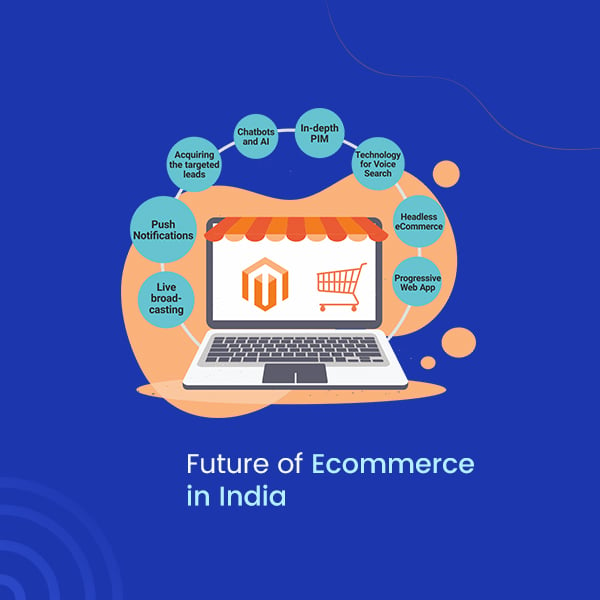
What is the Future of Ecommerce in India?
India is on the verge of becoming a digital powerhouse. It is a benefit for Ecommerce since the potential for internet users to become shoppers is vast. However, losses have become the norm. Every other day, a new eCommerce website emerges, requiring significant marketing and promotion expenditures. Without a question, the Indian government is working hard to expand eCommerce in the country, but there is still a long way to go.
How Will the Future of Ecommerce Look?
E-commerce serves as a link between two important aspects of the internet business market: customers and sales. E-commerce marketing is the process of promoting awareness of a store’s online presence, product range, and brand in order to increase sales. Ecommerce marketing also helps to raise awareness of a company’s product range and brand.
Let’s discuss the reasons behind the growth of e-commerce in India :
1. Investing in logistics
The Ecommerce industry has been rapidly growing its footprint. Over the years, they’ve greatly expanded access to pin codes. E-commerce companies are expanding their warehouse capacity in anticipation of a significant increase in sales. As the major players expand their reach into smaller areas, they also invest in their logistics networks to keep up with the expansion.
2. Campaigns to promote digital India
With the “Digital India” program, the Indian government attempted to improve online infrastructure by extending internet connectivity in rural areas. It appears that their efforts are beginning to bear fruit. Users of the internet are steadily increasing. Smartphones are now inexpensive, internet plans are inexpensive, and Internet users are converting into Ecommerce customers on a daily basis. This government Endeavour has assured us that Ecommerce is moving in the right direction.
3. Using a safe payment gateway
One-touch payments, rapid transfers, e-wallets, and other recent developments can be seen. Passwords and security answers no longer need to be remembered. Indian banks provide sufficient assistance to users in order to make payments more secure and efficient.
4. Returns and exchanges are easy
Returns and exchanges of products are no longer a major issue. Returns and exchanges accounted for a significant portion of the logistics cost, which was an additional hardship for eCommerce businesses. However, with the introduction of courier aggregators like Ship rocket, RTO (return to origin) rates are now 10-15% lower than forwarding charges. As a result, eCommerce businesses have been able to provide better services to their clients.
5. User Experience
Examining the visitor’s experience on the website. They would desire efficient procedures that allow them to assist in product purchases. The sector has been concentrating on merchandising, logistics, customer service, UX design, and other areas, all of which have been supported by next-generation technology.
Technology plays an important part in customer satisfaction and has enhanced the level of trust. It has aided in providing the audience with a better user experience. The tech audience is always on the lookout for new and innovative features, and the usage of technology makes it simple to reach out to them.
6. The ability to reach more people
The players have made additional efforts to reach out to Tier 2 and Tier 3 players. High-speed internet services have greatly aided the sector in reaching a larger audience. The surge in income in Tier 2 and Tier 3 cities has also become a significant aspect of the eCommerce industry’s future.
The growing frequency of newcomers in the sector has also allowed this segment of the population to become addicted to online shopping platforms. The use of technology has also aided this sector in terms of numerous shopping ways. Targeted products make it easy for e-commerce platforms to keep people engaged on the site.